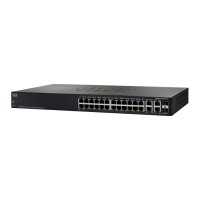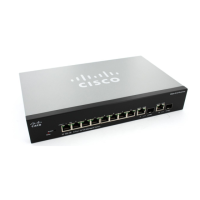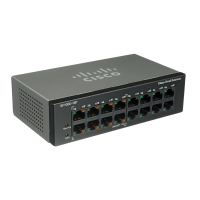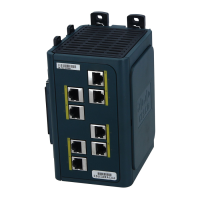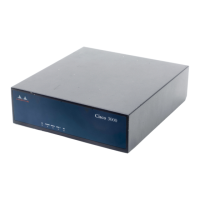IP Configuration
IPv6 Management and Interfaces
Cisco Small Business 200, 300 and 500 Series Managed Switch Administration Guide (Internal Version) 301
17
IPv6 Management and Interfaces
The Internet Protocol version 6 (IPv6) is a network-layer protocol for packet-
switched internetworks. IPv6 was designed to replace IPv4, the predominantly
deployed Internet protocol.
IPv6 introduces greater flexibility in assigning IP addresses, because the address
size increases from 32-bit to 128-bit addresses. IPv6 addresses are written as
eight groups of four hexadecimal digits, for example
FE80:0000:0000:0000:0000:9C00:876A:130B. The abbreviated form, in which a
group of zeroes can be left out, and replaced with '::', is also acceptable, for
example, ::-FE80::9C00:876A:130B.
IPv6 nodes require an intermediary mapping mechanism to communicate with
other IPv6 nodes over an IPv4-only network. This mechanism, called a tunnel,
enables IPv6-only hosts to reach IPv4 services, and enables isolated IPv6 hosts
and networks to reach an IPv6 node over the IPv4 infrastructure.
Tunneling uses either an ISATAP or manual mechanism (see IPv6 Tunnel).
Tunneling treats the IPv4 network as a virtual IPv6 local link, with mappings from
each IPv4 address to a link local IPv6 address.
The device detects IPv6 frames by the IPv6 Ethertype.
IPv6 Global Configuration
To define IPv6 global parameters and DHCPv6 client settings:
STEP 1 In Layer 2 system mode, click Administration > Management Interface > IPv6
Global Configuration.
In Layer 3 system mode, click IP Configuration > IPv6 Management and
Interfaces > IPv6 Global Configuration.
STEP 2 Enter values for the following fields:
• ICMPv6 Rate Limit Interval—Enter how often the ICMP error messages are
generated.
• ICMPv6 Rate Limit Bucket Size—Enter the maximum number of ICMP error
messages that can be sent by the device per interval.
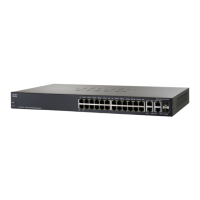
